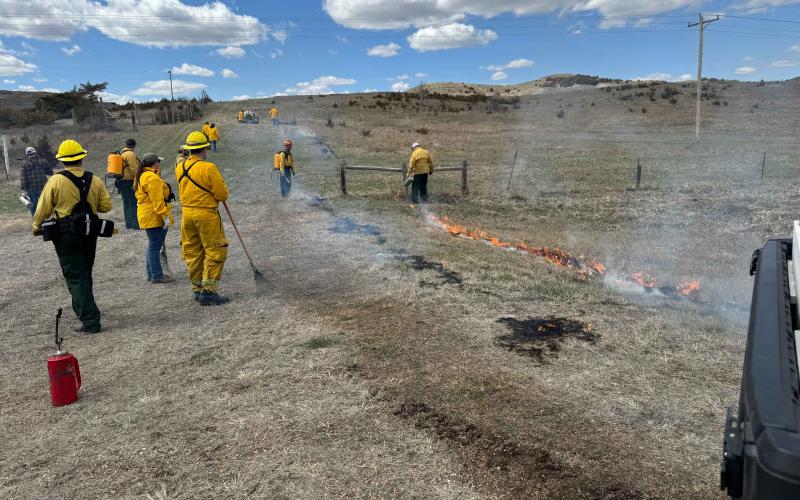Originally written by Ruth Beck, former SDSU Extension Agronomy Field Specialist.
Over the growing season, solar radiation, air temperature and plant size are the dominant factors in determining evaporative demand and the rate of water use by wheat. Water use can vary dramatically on a day-to day basis, depending on climate and wheat health.
Crop water use or evapotranspiration (called ET) is made up of evaporation from the soil surface and transpiration from the plant leaves. Winter wheat has two peak water use periods: fall and spring. Wheat water use in spring is greater than in fall because there is a full canopy cover and greater atmospheric demand (warmer with lower humidity). In the fall, much of the ET is evaporation, water use continues as long as weather conditions are favorable for the winter wheat. Upon freezing, transpiration from the wheat is near zero but evaporation from the soil continues as long as weather conditions are conducive. Once spring green up occurs, water use gradually increases until late May or early June. Water use peaks as the wheat plant reaches the boot stage. At this point the plant begins to turn the energy it receives into grain production. Although grain is being produced, water use begins to drop off at nearly the same rate as it increased. At four weeks after peak water use the winter wheat nears maturity.
Up to 4 inches of water can be used from planting through plant dormancy in the fall. Total evapotranspiration is dependent on duration of snow cover which minimizes evaporation from the soil. Winter snow and early spring precipitation can supply or replace much of the water used during this period.
The amount of water required by seedlings to emerge depends on the depth of planting. Seeds planted 3 inches deep require more water to reach the soil surface than seeds planted at 1.5 inches deep. Though the total amount of water required for seedling emergence is not a lot, it is pulled from a very small area of the soil. Therefore when the water content of the soil is low, it is held too closely by the soil to help very much with germination.
Once the leaves are exposed to light, the leaf pores or stomata open. This allows for gas exchange and the flow of water vapor from the plant. From the time a shoot appears above ground until the grain is filled, there must be enough water taken up by the roots to provide for transpiration and enough left over in the plant to maintain the minimal turgor essential for plant growth and development.
The larger the plant and leaf area, the greater the plants demand for water, until the plant begins to mature and senesce. If the plant cannot fulfill its full demand for water, it will make adjustments. For example, the plant may develop smaller leaves, abort tillers and/or have fewer spikelets and fewer florets in each spikelet. These adjustments result in reduced yields.
Water movement from the roots to the top of the plant is slow, especially if the water is being drawn from a 2-5 ft. depth in the soil. If the wheat plant is under drought or heat stress, it has the ability to close its stomata. This enables the plant to catch up or to continue to draw water from the soil and fill its above ground parts back up. The stomata of wheat plants also close at night. No carbon dioxide can enter the plant when these pores are closed. This also allows the wheat plants to spend all night regaining water and increasing turgidity. In the morning stomata open again, for a few hours or all day, depending on conditions.
In general, the yield of wheat is directly proportional to the amount of water transpired by the plant. In other words, yield will increase as more water passes from the roots to the stems and out through the leaves. As well, the amount of water transpired by wheat is a function of the leaf area and open stomata. The opening and closing of stomata is a short term response of the wheat plant to its water supply, whereas the size of the leaf area is a long term response to the water supply. Thus the greater the water supply, the larger the leaf area and the more the stoma are open. This results in a higher rate of transpiration, which leads to higher yields.
In reality, many factors outside of water availability can affect wheat yields. Other environmental stresses such as heat and frost; pests such as weeds, insects and diseases and management practices can all negatively affect yields and essentially reduce the plants water use efficiency.
More information regarding water use by winter wheat can be found in Producing Irrigated Winter Wheat by UNL Extension or by referring to the publication “Wheat Health Management” by R. James Cook and Roger J. Veseth.


